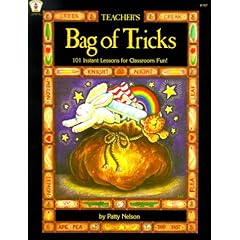Discussion on a potential rate cut – is it on the table? By Tim Duy, courtesy of Tim and Mark Thoma’s Economist’s View.
Fed Watch: Where Is The Rate Cut?
Tim Duy says the Fed may not cut the target interest rate at its next rate setting meeting:
Where Is The Rate Cut?, by Tim Duy: On the surface, the case for a rate cut seems obvious. But, despite an extraordinary and historic two weeks on Wall Street, Bernanke & Co. have failed to deliver. And perhaps the lack of action today, a day of panic in global equity markets, is telling us something about policy – don’t look for a rate cut, at least not yet. Maybe we should be listening.
If there is one thing the Fed has taught us in the last year, it is that they are inclined to meet periods of financial turbulence with a rate cut. Hence growing expectation for a rate cut, expectations that were only heightened by the string of data that confirmed for almost all remaining doubters that the US economy had slid into recession by at least the third quarter, if not much earlier. Last week’s employment and ISM reports for September appeared to seal the deal on that call.
Relatively dovish Fed-speak appeared to confirm these expectations. And if a rate cut was coming, why wait until the end of the month, especially when equity markets needed a boost of confidence? Yet no rate cut emerged. Instead, some Fed speakers have come out against a rate cut, such as St. Louis Fed President James Bullard and Richmond Fed President Jeffrey Lacker. To be sure, perhaps they are simply out of step with the Board. But perhaps the Fed has come to the conclusion that, at least for now, interest rates are not the problem, especially since, relative to the rate of decline in the real economy, the Fed is well ahead of where it would normally be at this point in the cycle.
It is arguable that rate cuts have done little to stem the tide of deleveraging that is ravaging the banking system. Indeed, despite a policy path that appears determined not to remake the Fed’s mistake during the 1930’s by taking rates down quickly and flooding the financial markets with liquidity, the crisis continues unabated, as if the more the Fed does, the more financial markets need done. To be sure, perhaps the situation would be worse if not for the Fed’s actions, but those actions failed to produce anything remotely near the quick fix I think was originally envisioned by Fed Chairman Ben Bernanke. Some even think the Fed is making the situation worse via their liquidity provisions, prolonging the lack of interbank lending by providing an escape valve. Why try to reduce counterparty risk when the Fed stands ready to be the riskless partner?
The lack of a rate cut at this juncture suggests the Fed is readying a new bag of tricks. They let us sneak a peek at that bag today, using the new powers granted by TARP to pay interest on deposits, thereby setting a lower bound on the Fed Funds rate that should nearly reduce the Fed’s need to sterilize their liquidity provisions via term auction facilities. At the same time, they extended the size of the TAF. These are clear efforts to fix broken credit channels, and this is likely the Fed’s focus, not interest rates.
But, as noted above, will an expansion of the existing liquidity provisions, or additional rate cuts, have any impact? Or are they simply more of already failed policies? The Fed is likely preparing for a significant new initiative, consistent with reports that the Fed, with the cooperation of Treasury, is preparing a program to purchase a broader class of assets than simply troubled mortgage backed securities. Outright purchases of commercial paper appears to be on the table – not surprising as the growing credit crunch in this market threatens working capital, the lifeblood of daily commerce.
Would outright purchases be inflationary? Here is where the Fed would believe that the ability to pay interest on deposits is important – short term interest rates cannot fall much below the Fed Funds rate, as any excess money would simply flow into reserves at the Fed. The ability to pay deposits should automatically sterilize any excess money creation. This might also explain why the Fed would be hesitant to cut rates at this point; policymakers would want to see if the new system worked as expected before changing policy rates. We are in uncharted territory here, but if excess money created simply flows automatically back into the Fed’s coffers, inflation should not be a concern (assuming that outright purchases are equivalent to term lending). If credit channels suddenly loosen up, then interest rates may prove to be too low and inflationary, but the Fed hopefully, could react quickly by raising the Fed Funds rate and the interest rates they pay depositors.
Bottom Line: It is impossible to rule out a rate cut, and it seems like a cut should be the baseline case. Indeed, the case for a rate cut should be a slam dunk, expect for a.) rates are already low and b.) we haven’t seen a rate cut yet. The latter point, especially given the intensity of the crisis over the last two weeks, suggests that looking for a rate cut is simply a case of barking up the wrong tree. It is what we have been conditioned to look for, and hence we are expecting it. But there is nothing like an inconvenient fact to undermine a perfectly good theory. The Fed may simply have already moved well beyond rate cuts in searching for solutions to the current crisis. And outright asset purchases is looking like that next move.




